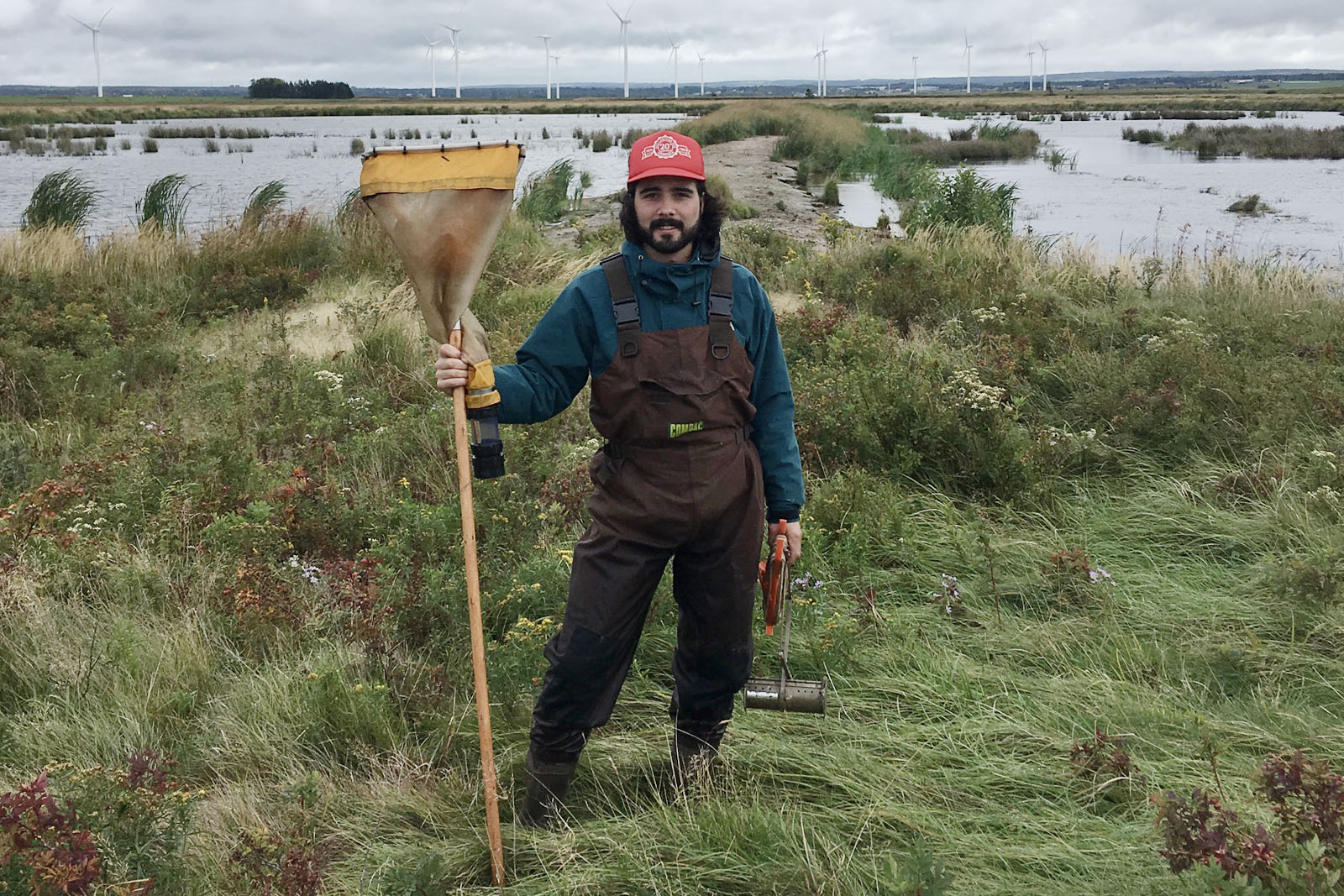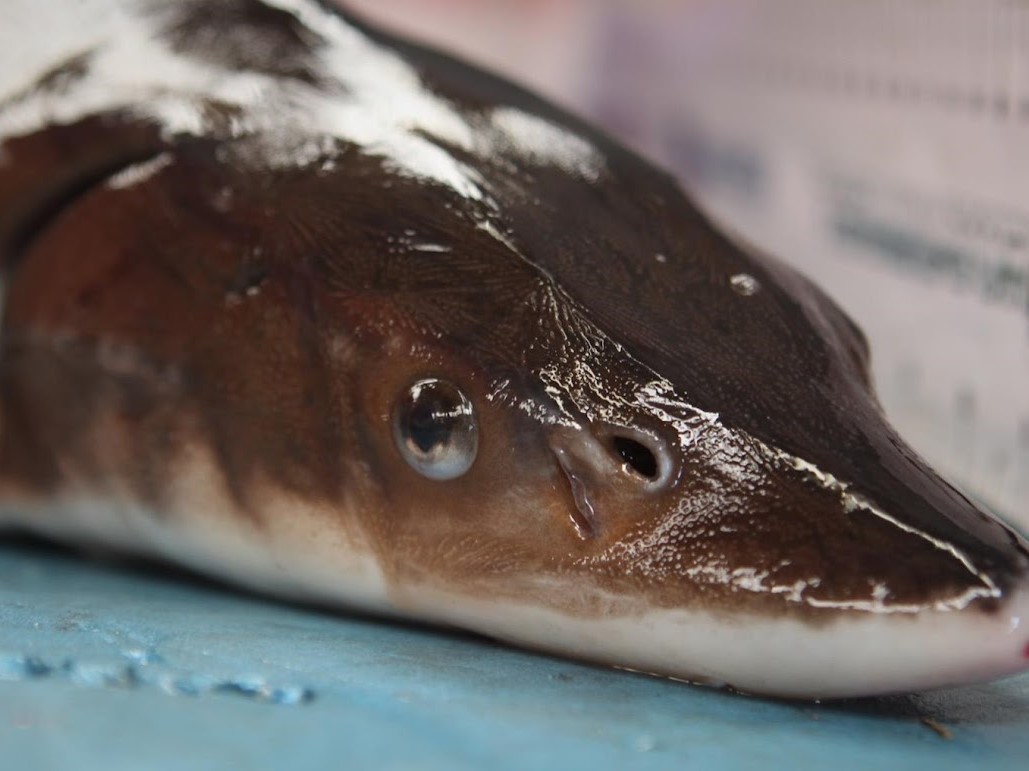Pursue a research-based master’s degree in a small, intimate environment.
The University has an active research community, driven by faculty with wide-ranging and varied research interests.
Graduate students work directly with their faculty supervisor on research. The program’s focus is on laboratory and field experience, which provides graduate students with an abundance of hands-on opportunities.
Mount Allison graduate students are highly sought after by employers as well as doctoral programs because of the high level research and training they accomplish during their studies.
Looking to apply? Read the 'How to find a supervisor' page and then visit graduate studies admissions.
International MSc students' responsibilities and processes: refer to the information at the bottom of this page.
Departments hosting graduate students
Biology
The main areas of research activity:
- ecology
- molecular ecology
- aquatic ecosystems
- global change
- conservation biology
- animal physiology
- animal behavior
- herpetology
- ecology and evolution of marine diatoms
- microbiology
- plant biology
- genetics
- developmental biology
- fish ecology
- neurophysiology
More about opportunities for students in Biology

Chemistry and Biochemistry
The main areas of research activity:
- organometallic and main group chemistry
- medicinal, bio-organic, and bio-inorganic chemistry
- materials chemistry
- surface chemistry
- environmental chemistry
- green chemistry
- plant/algal/microbial metabolic biochemistry
- algal phytoplankton
- molecular pharmacology
- signal transduction
More about opportunities for students in Chemistry

Current research opportunities
The Litvak Lab research interests include fish ecology, biology and ecophysiology, spatial ecology and modelling, conservation, aquaculture and gene banking. To advance these fields, we study many species including shortnose sturgeon, Atlantic sturgeon, white sturgeon, lake sturgeon, zebrafish, tilapia, alewife, white perch, cyprinids, cod, and winter flounder.
2024-25: We are currently looking for 2 M.Sc. students. If you are interested contact Dr. Matt Litvak, Department of Biology, Mount Allison University, 53 York St., Sackville, NB, E4L 1G7, Canada--email: mlitvak@mta.ca. Lab webpage: https://sites.google.com/site/litvaklabsite/Home

Please contact Dr. Litvak (mlitvak@mta.ca) regarding the projects and Graduate Studies regarding admission.
International students, read more here about the typical processes and your responsibilities:
1) Financial considerations - International applicants for graduate studies in Canada will need to demonstrate that they have or are guaranteed to receive at least $20,635 (CAD) if coming to Canada as a single person (or a higher amount if family members are coming as well), in addition to their first year of tuition and travel costs. Read more on the Government of Canada website.
2) Provincial Attestation Letter (PAL) is needed before applying for a Canadian government study permit – As of 2024, international grad students being accepted into the MSc program at the university will now need to be assigned a Provincial Attestation Letter (PAL). Requesting a PAL from Mount Allison University: The Office of Graduate Studies will provide a secure document transfer link to you. You will need to provide an image of your passport photo page as well as provide consent for the university to collect your passport information. Please do not send this information before it is requested by Mount Allison, and DO NOT send passport images by email. Please contact gradstudies@mta.ca with any questions. Mount Allison's Registrar will issue you a Letter of Acceptance (LOA) and your PAL letter at the same time. You will then send your LOA and PAL to the Canadian government when you are applying for a study permit and student visa. More Government of Canada PAL details are provided here. Note: this requirement is due to change in January 2026.
3) Visa end dates/extension of study permit – MSc students are responsible for ensuring that their study permit timeframe covers your full program of study, and to ensure that you apply well in advance (based upon current lead-time estimates which can easily exceed 150 days/5 months) if you require an extension to your study permit. Keep an eye on the info provided here for a current estimate of processing times.
4) Before moving to Sackville, New Brunswick and before you can be paid your graduate stipend from Mount Allison – consider your needs for local housing, a Canadian bank account, access to medical services (for on-going medical needs and prescription continuations), travel and health insurance, etc. The International Centre at Mount Allison provides a variety of supports and services for international students: https://mta.ca/current-students/community-supports/international-studen…. Discuss your needs with your confirmed MSc program faculty supervisor and contact the International Centre (Christa Maston cmaston@mta.ca) for assistance.
5) Confirmation of Enrolment letters – don’t use letters generated in Self-Service, as those will imply that the MSc student is in a part-time program when, in fact, the item on your transcript noted as “MSCI 5990 Graduate Thesis” is our Registrar’s way of indicating your enrolment in the Master of Science Program (not just ‘one course’). Instead, request a letter from a Student Service Coordinator via advisor@mta.ca and you may want to contact the International Centre (Christa Maston cmaston@mta.ca) for assistance/to discuss your needs.
6) If applying for a post-grad work permit (PGWP), a transcript is required – for this, you probably want to ask the academic advisors to confirm in a letter that you are a full-time student because it would look like part-time enrolment on your transcript. For PGWP application, you typically need a completion of studies letter. This is usually done by our advisors (you can send an email to regoffice@mta.ca when you get to this stage) so make sure you ask for both a transcript and a letter indicating you were a full-time graduate student for your PGWP.
Contact us
Graduate Studies
Ph: (506) 364-2302
Fax: (506) 364-2299
gradstudies@mta.ca
Location
65 York St.
Sackville, NB E4L 1E4
CANADA

